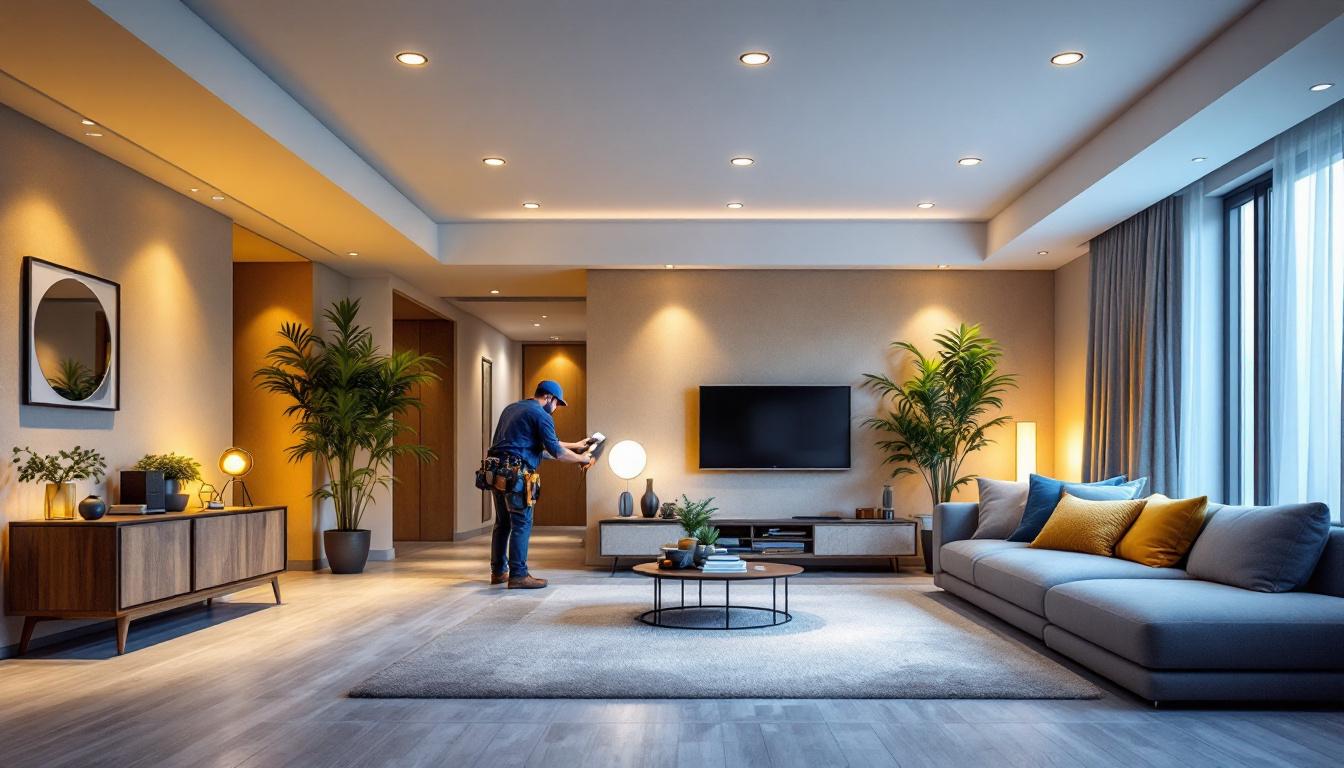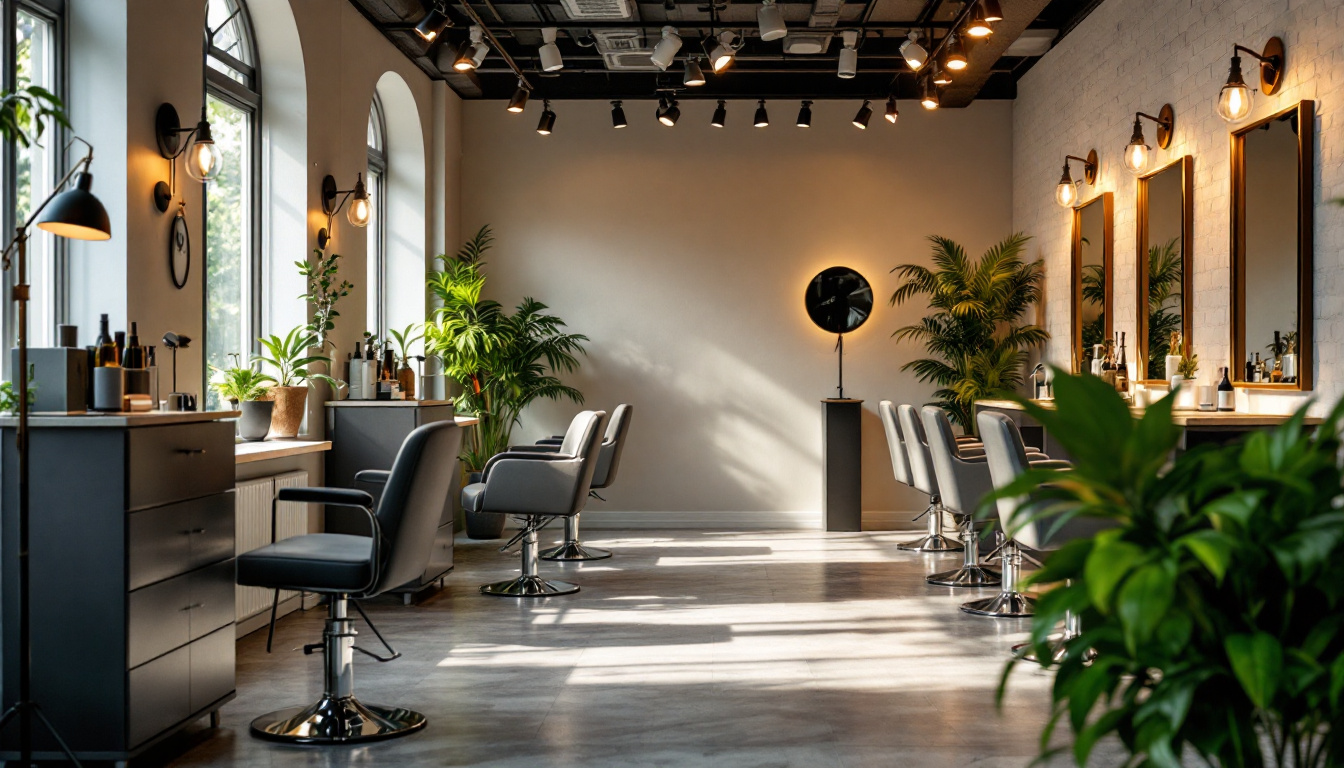
In the ever-evolving world of lighting, LED technology has become a staple for both residential and commercial applications. As a lighting contractor, understanding LED bulb sizes is crucial to ensuring that clients receive the best possible solutions for their lighting needs. This article delves into the various LED bulb sizes, their applications, and essential tips for selecting the right bulbs for different projects.
LED bulbs come in a variety of sizes and shapes, each designed for specific applications. Familiarity with these sizes will help contractors make informed decisions when recommending products to clients. With the increasing popularity of LED technology, understanding the nuances of bulb sizes is more important than ever, as it can significantly impact energy efficiency and lighting quality in both residential and commercial settings.
The most common LED bulb sizes include A-series, BR-series, PAR-series, and MR-series. Each of these sizes serves different purposes and is compatible with various fixtures. Knowing the right bulb size can enhance the aesthetic appeal of a space while also ensuring optimal lighting conditions for various tasks.
LED bulbs are typically measured in two ways: by their diameter and by their shape designation. For instance, an A19 bulb has a diameter of 19 eighths of an inch, while a PAR30 bulb has a diameter of 30 eighths of an inch. Understanding these measurements helps contractors select the right bulb for specific fixtures. This knowledge is crucial, especially when dealing with specialized lighting needs in commercial spaces, where the wrong bulb size can lead to inadequate lighting and increased energy costs.
Additionally, the shape designation provides insight into the bulb’s intended use. For example, an A-series bulb is generally used for general lighting, while a PAR-series bulb is intended for focused lighting applications. Furthermore, some bulbs come with additional features such as dimmability or smart technology compatibility, which can enhance their functionality and adaptability in various settings. As the lighting industry evolves, staying informed about the latest advancements in LED technology and bulb sizes will enable contractors to provide clients with the best possible lighting solutions tailored to their specific needs.
Selecting the appropriate LED bulb size is essential for achieving optimal lighting performance. Here are some key considerations that contractors should keep in mind.
Before recommending an LED bulb, it is vital to assess the compatibility with existing fixtures. Many fixtures have specific size requirements, and using the wrong bulb can lead to poor performance or even damage. Measure the socket size and ensure that the chosen bulb fits securely.
In addition, consider the fixture’s design and intended use. For instance, recessed lighting fixtures may require BR or PAR bulbs, while table lamps typically accommodate A-series bulbs. Understanding these nuances will help contractors provide tailored solutions to clients. Furthermore, it’s important to check for any limitations on wattage that the fixture may impose, as exceeding this can lead to overheating and potential hazards. Additionally, some fixtures may have specific dimming capabilities that require compatible LED bulbs, ensuring that the lighting can be adjusted to suit various moods and activities.
Another crucial factor in selecting LED bulbs is evaluating light output, measured in lumens, and color temperature, measured in Kelvin. The desired ambiance of a space will dictate the appropriate lumens and color temperature.
For example, a warm white light (around 2700K) is often preferred for residential settings to create a cozy atmosphere, while cooler white light (around 5000K) is ideal for commercial spaces that require bright, clear lighting. Contractors should guide clients in choosing the right combination to achieve their desired effect. Additionally, it is worth noting that the color rendering index (CRI) of a bulb can significantly impact how colors appear in a space. A higher CRI rating (above 80) is beneficial in settings where accurate color representation is crucial, such as art galleries or retail environments. By educating clients on these aspects, contractors can enhance the overall satisfaction with their lighting choices and ensure that the selected bulbs meet both functional and aesthetic needs.
One of the primary advantages of LED bulbs is their energy efficiency and long lifespan. Understanding these factors can help contractors advocate for LED solutions to clients.
LED bulbs consume significantly less energy compared to traditional incandescent or halogen bulbs. This energy efficiency translates into lower electricity bills for clients, making LED bulbs a cost-effective choice in the long run.
When discussing energy savings with clients, it is beneficial to provide comparisons. For instance, an LED bulb may use only 10 watts of power while producing the same light output as a 60-watt incandescent bulb. Highlighting these savings can help clients appreciate the value of investing in LED technology.
LED bulbs boast an impressive lifespan, often lasting up to 25,000 hours or more. This longevity means fewer replacements and reduced maintenance costs for clients. Contractors should emphasize this benefit when discussing LED options, as it can significantly impact long-term expenses.
Furthermore, the durability of LED bulbs makes them suitable for a variety of environments, including outdoor and industrial settings. Their resistance to shock and vibration ensures that they can withstand challenging conditions, making them a reliable choice for contractors and clients alike.
Understanding the various applications for different LED bulb sizes can help contractors make informed recommendations. Here are some common scenarios where specific LED bulb sizes excel.
In residential settings, A-series bulbs are a popular choice for general lighting in living rooms, bedrooms, and kitchens. Their familiar shape and warm light output create a comfortable atmosphere for homeowners.
For accent lighting, contractors may recommend MR-series bulbs in track lighting or recessed fixtures. These bulbs provide focused illumination on artwork or architectural features, enhancing the overall aesthetic of a space.
In commercial environments, the choice of LED bulb size often depends on the specific application. For example, BR-series bulbs are commonly used in recessed lighting to provide ambient light in retail spaces, while PAR-series bulbs are ideal for spotlighting products or displays.
Moreover, LED tubes are increasingly popular in commercial settings, replacing traditional fluorescent tubes in overhead lighting fixtures. They provide consistent brightness and energy savings, making them an attractive option for businesses.
Proper installation is crucial for maximizing the performance of LED bulbs. Here are some essential tips for contractors to consider during the installation process.
Many clients desire the ability to dim their lighting for added flexibility. However, not all LED bulbs are compatible with dimmer switches. Contractors should verify the dimming capabilities of the chosen bulbs and recommend compatible dimmer switches to ensure optimal performance.
When installing dimmable LED bulbs, it is essential to test the dimming functionality after installation. This step ensures that clients can achieve their desired lighting levels without flickering or buzzing.
Ensuring that fixtures are installed correctly is vital for the longevity and performance of LED bulbs. Contractors should follow manufacturer guidelines for fixture installation and ensure that all connections are secure.
Additionally, consider the placement of fixtures in relation to the intended lighting effect. Proper positioning can enhance the overall ambiance of a space and help clients achieve their desired lighting goals.
The lighting industry is continuously evolving, with new technologies emerging to enhance LED performance. Staying informed about these trends can help contractors provide cutting-edge solutions to clients.
Smart lighting technology is gaining traction in both residential and commercial markets. LED bulbs equipped with smart features allow users to control lighting remotely, set schedules, and even adjust color temperatures through smartphone applications.
Contractors should familiarize themselves with these smart lighting options and be prepared to recommend compatible products to clients. This knowledge can position contractors as industry leaders and enhance their service offerings.
As energy efficiency standards continue to evolve, manufacturers are developing LED bulbs that consume even less energy while providing superior light output. Contractors should stay updated on these advancements to ensure they are offering the most efficient solutions to clients.
By embracing new technologies and innovations, contractors can help clients reduce their carbon footprint and contribute to a more sustainable future.
Understanding LED bulb sizes and their applications is essential for lighting contractors aiming to provide the best solutions for their clients. By considering factors such as fixture compatibility, light output, and energy efficiency, contractors can make informed recommendations that meet the diverse needs of their clients.
As the lighting industry continues to evolve, staying informed about new technologies and trends will further enhance a contractor’s expertise. By embracing these insights, lighting contractors can position themselves as trusted advisors in the realm of LED lighting.
Ultimately, the right LED bulb size can transform spaces, enhance aesthetics, and contribute to energy savings, making it a vital consideration for every lighting project.
Ready to elevate your lighting projects with the right LED bulb sizes and the best value in the industry? Look no further than LumenWholesale. We provide lighting contractors with an extensive selection of top-quality, spec-grade lighting products at unbeatable wholesale prices. Say goodbye to inflated markups and hello to superior lighting solutions that meet the highest industry standards. With free shipping on bulk orders, you can trust that you’re getting premium lighting without hidden fees or compromises. Enhance your lighting expertise and project success by choosing LumenWholesale for all your lighting needs. Wholesale Lighting at the Best Value is just a click away.

Discover essential compliance guidelines for fluorescent light fixtures in this comprehensive guide tailored for lighting contractors.

Discover how 4 recessed LED downlights can transform your business with increased efficiency and profits.

Explore the intricacies of hair salon lighting with insights tailored for lighting contractors.

Discover how a wire pulling tool can revolutionize the workflow of lighting contractors by saving time and reducing costs.